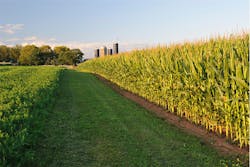Largest US aquifer to receive more support with USDA investment
WASHINGTON — Nov. 9, 2015 — The U.S. Department of Agriculture (USDA) will support water conservation and improvement efforts with an $8 million investment in the Ogallala Aquifer Initiative (OAI), according to a press release.
The funding will help farmers and ranchers strengthen their agricultural operations while conserving billions of gallons of water every year, noted the release.
The Ogalla Aquifer is the largest aquifer in the U.S., supporting parts of eight states: Nebraska, Colorado, Kansas, New Mexico, Oklahoma, South Dakota, Texas and Wyoming, reported the release. Covering almost 174,000 square miles, it is the primary water source for the High Plains region.
"USDA’s Ogallala Aquifer Initiative helps landowners build resilience in their farms and ranches and better manage water use in this thirsty region,” said Agriculture Secretary Vilsack in the release. “Since 2011 USDA has invested $74 million in helping more than 1,600 agricultural producers conserve water on 341,000 acres through this initiative.”
The aquifer has a large impact on the U.S. food supply. Nearly one-fifth of the wheat, corn, cotton and cattle from the U.S. is supported by the aquifer, as well as 30 percent of all water used for the country’s irrigation.
The aquifer’s water level dropped by 36.2 million acre-feet from 2011 to 2013 according to U.S. Geological Survey data, shared the release.
The OAI is an initiative of the USDA’s Natural Resources Conservation Service, stated the release. It focuses on the water quality and quantity conservation efforts in nine focus areas through local, targeted efforts. Two focus areas will be added in fiscal year 2016: the Middle Republican Natural Resource District in Nebraska and the Oklahoma Ogallala Aquifer Initiative.
View the entire list of OAI areas here.
You can find the entire release here.
